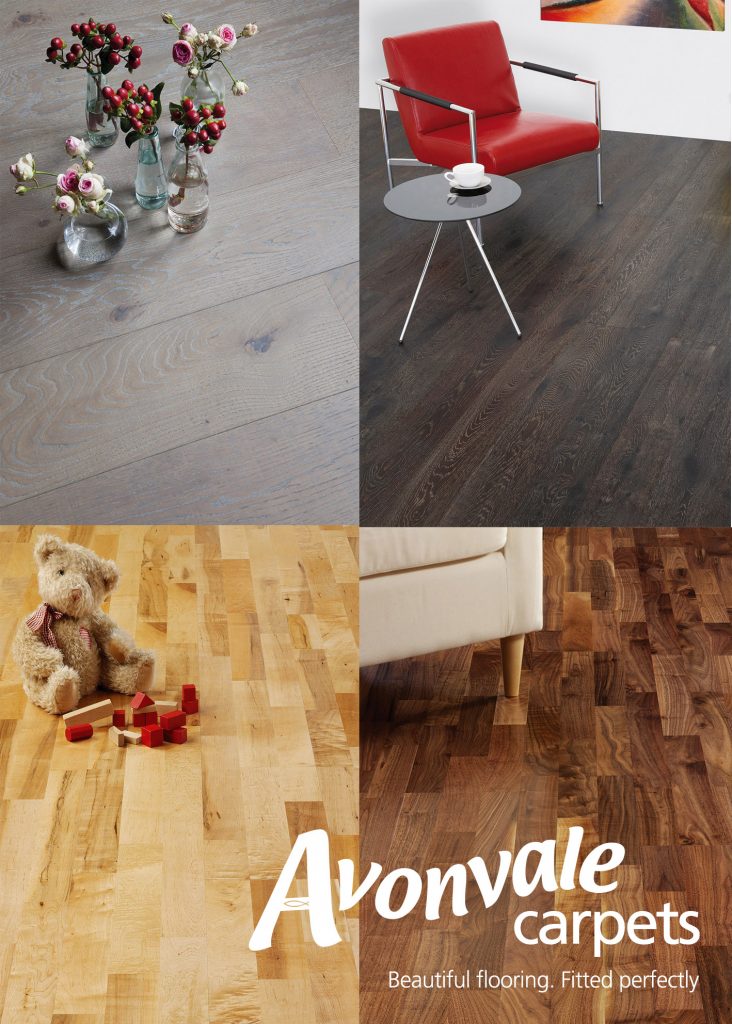If you’re considering buying a wood floor for your home or business you’re actually faced with a choice of two quite different types of flooring – engineered or solid wood. Both are very popular for the timeless, natural beauty they bring, but how do they differ exactly?
Structure
As you might expect, solid wood flooring (also called solid hardwood flooring) is composed of planks made from a solid piece of hardwood. Planks can typically be up to 20mm thick, in standard widths of between 140mm and 190mm.
Engineered wood flooring on the other hand is made up of multiple layers of wood. The top layer that you see is called the wear layer and is again of solid hardwood, but to a thickness of between 2.5mm to 6mm.
Then bonded underneath are multiple base layers, most commonly of high-quality plywood. The total thickness of engineered wood planks can again be up to 20mm, though widths can be greater, at up to 350mm.
Look and feel
Once fitted, engineered and solid wood floors look and feel very much alike and are actually hard to tell apart. Both types are available in a range of beautiful hardwood species, the more common of which are ash, elm, oak and walnut.
And in each type, you will also have a wide choice of colours, grain grades, finishes (oil, lacquer, varnish, brushed, unfinished) and plank widths. So you’ve plenty of design freedom to perfectly match your own particular preferences in interior design – whether it’s solid or engineered wood.
Stability
While both types of wood floor are considered to offer good stability and strength over time, because of its multilayer construction, engineered wood flooring is more stable than solid wood.
This is because solid wood is adversely affected by heat and moisture. In a very hot room it can shrink, while in a cold and damp room it can swell. So it’s not recommended for bathrooms, kitchens or conservatories, or any room subject to seasonal swings in temperature. It also won’t support underfloor heating.
Engineered wood however has been designed to tolerate the effects of wide fluctuations in temperature and humidity. As a result it’s distortion-free, suits most areas of a home or business, and is a good choice for older, less well insulated buildings. And unlike solid floors, it can also be used with underfloor heating systems.
Durability
Both solid wood and engineered wood flooring are highly durable. That said, both are still vulnerable to the scratches, scuffing, spillages and marks of everyday use.
In the case of solid wood flooring though it can be sanded back and refinished many times during its lifetime in order to rejuvenate it. Engineered wood can also be sanded back and refinished, but just not as many times, with the depth of the wear layer setting a limit, perhaps three or four times for the thickest wear layer.
As a result, you could think in terms of a solid wood floor lasting maybe even 100 years, whereas a well looked-after engineered wood floor might last half as long, though of course still a lifetime for most homes.
Installation
Most solid wood flooring comes with a traditional tongue and groove profile for fixing the planks together. Engineered wood flooring though also offers the option of a fast click-fitting profile as well as tongue and groove.
Engineered wood can also be floated over an underlay, bringing leveling and insulating advantages. Solid wood flooring cannot be though, and for reasons of stability has to be fixed to the subfloor during installation.
Environmental
Compared to carpeting, which can need to be replaced every five or ten years, solid and engineered wood floors can both be viewed as more environmentally-friendly long term flooring solutions.
Of course, since engineered wood flooring only includes a very thin layer of hardwood on top, it is naturally a more environmentally-friendly option than the solid wood alternative.
In both cases, the most reputable wood floor manufacturers aim to ensure that their valuable raw materials are carefully and responsibly harvested from sustainable forests.
Cost
Since solid wood flooring uses a lot more hardwood in its construction that engineered wood, it is generally more costly. As a result, engineered wood floors can often be a more attractive proposition if budgets are a little more tight.
The cost of an engineered wood floor can though vary quite widely depending on two specific factors: the thickness of the hardwood layer and the number of base layer plies that are included in its construction.
That said the cost of both solid and engineered wood floors will also depend on other factors such as the species of wood or the size of plank for example, with rarer woods and wider planks demanding a higher price.
Wood flooring from Avonvale
Providing engineered wood flooring from our long-term manufacturing partners Natural Solutions and Xylo Flooring, Avonvale Carpets offers you a world-beating range of products. Pop into the shop, take away a sample and let us help you choose.

